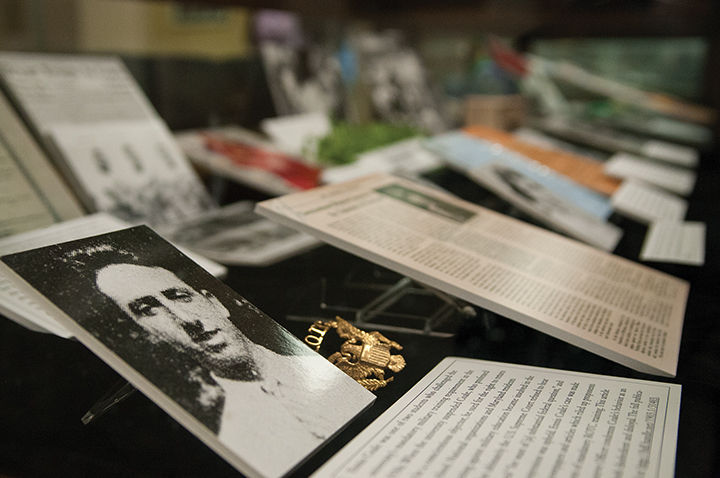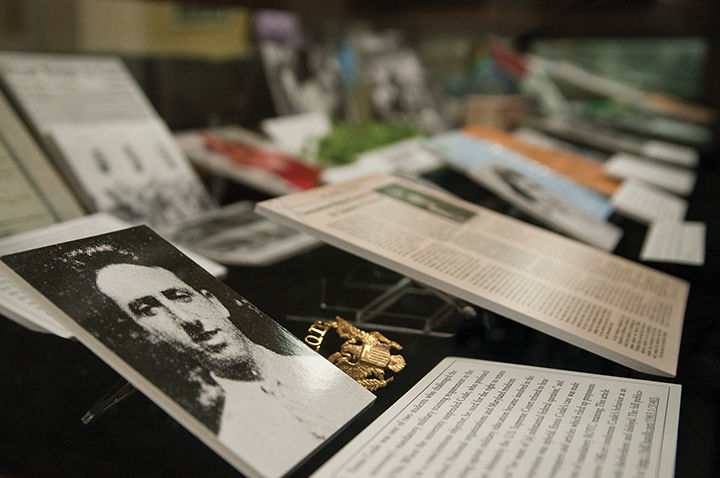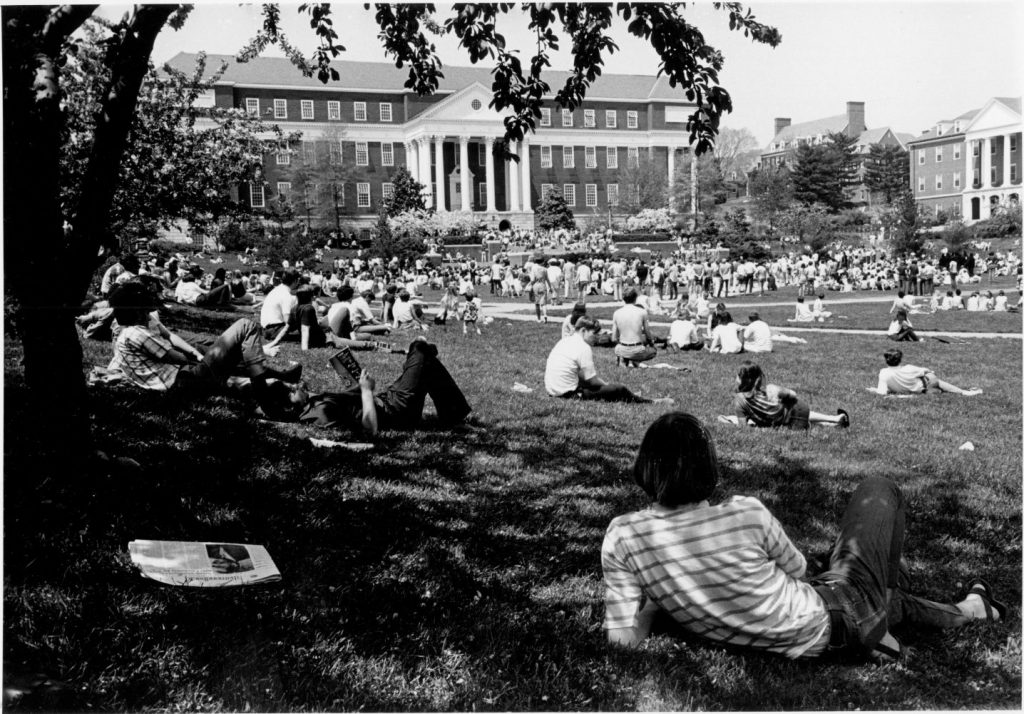In 1970, tear gas permeated McKeldin Mall while thousands of students occupied and vandalized the library and National Guardsmen confronted the Vietnam War protesters as this university witnessed its largest demonstration in history.
To help educate students about the history behind this university and student activism, the University Archives placed an exhibit titled “Dissidence and Debate” on the first and second floors of McKeldin Library to display artifacts from them. The exhibit is filled with items, photographs and oral history accounts from various student protests at this university.
Ken Roussey, a graduate student and main curator of the exhibit, said he hopes his work can shed light on the past student activism.
“Student protests are a story that sometimes isn’t told or isn’t told objectively,” Roussey said. “I wanted to paint a picture, not only of what people are most familiar with — like the Vietnam era protests — but also of smaller protests.”
The display is split into two sections: one that focuses solely on Vietnam War protests during the war and one covering lesser-known demonstrations.
The Vietnam case holds items used in the protests, such as a tear gas canister that National Guardsmen threw at students during a 1970 protest and a gas mask one student’s father gave him just in case he was accidentally gassed on the campus.

protest1
“My favorite item is the gas canister,” Roussey said. “We originally didn’t think we would have room for it, but I was so determined to get it in there because it’s one of the coolest things from that era.”
The exhibit also represents the 1980 South African divestment protests, when students protested against the nation’s apartheid system, as well as the 1945 protests surrounding Paul “Bear” Bryant, one of the top college football coaches at the time, who left after a year because of disagreements with the university’s then-president, Harry C. “Curley” Byrd.
There is also a series of marijuana sit-ins from the 1970s represented, when students gathered on the campus to protest this university’s stance on drugs while several of them smoked marijuana, Roussey said.
The marijuana sit-ins came as one of the biggest surprises for Roussey, and he discovered them while going through old copies of The Diamondback. Different events ignited each demonstration, despite all having the same pro-marijuana message, he said.
“One was protesting drug paraphernalia laws, and the next one was protesting a series of drug raids on campus,” he said. “It was cool to see those different events and how they were connected in the bigger picture.”

protest
Sasha Hays, a sophomore landscape architecture major, said she was also surprised to hear about the marijuana sit-ins and the conviction students had while conducting them. The students were brave to lead the protests, she said, when the substance had an even worse connotation than the illegal drug has now.
“I’m kind of shocked to learn about the sit-ins,” Hays said. “Even though weed is illegal, I respect the students’ will to go against what the law said and stand up for what they believe is right.”
With the guidance of Anne Turkos, the university archivist, the project took Roussey about three months to complete.
But the work is worth it for Turkos, as it can help educate students about the University Archives as well as the campus history.
“I hope it can help raise awareness of what the archives are,” Turkos said.
Roussey agreed with Turkos, saying that officials hope to make students aware the exhibit exists and it is able to help them with research. But overall, Roussey said, he hopes students see his main point in the exhibit: This university has a rich history of student protests.
“I think it’s cool to show students that this is something in UMD’s history that isn’t new,” he said. “Students on campus have been active in voicing their opinions for a long time in different ways.”
Items from the Dissidence and Debate collection are featured in McKeldin Library on February 5, 2015.
Items from the Dissidence and Debate collection are featured in McKeldin Library on February 5, 2015.







